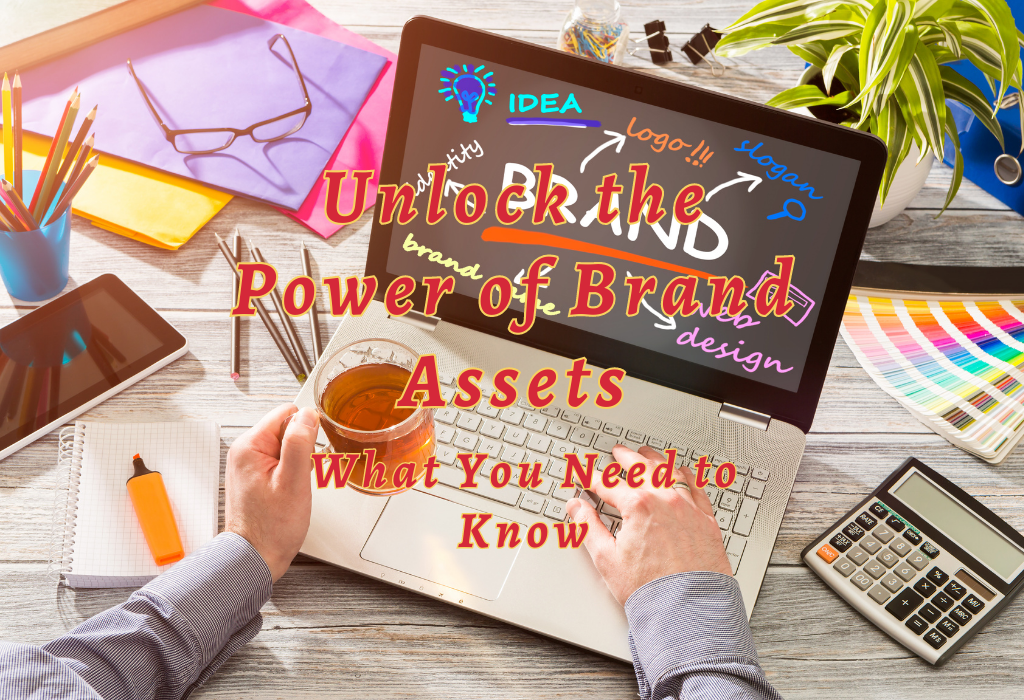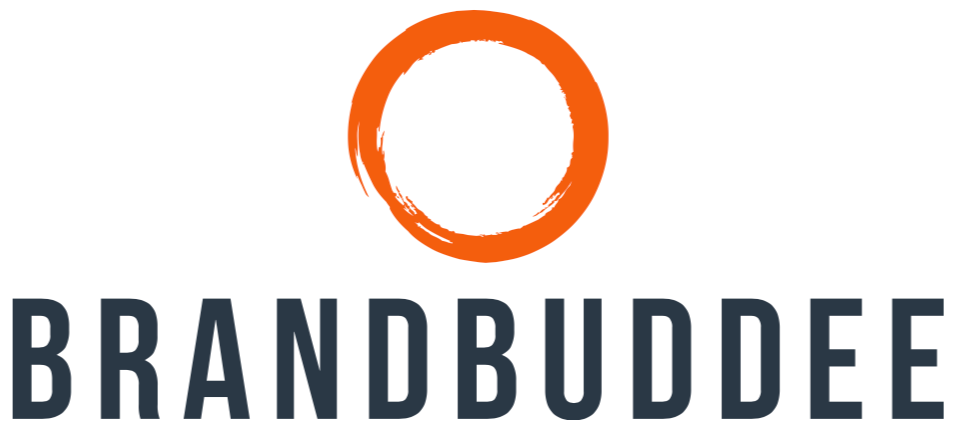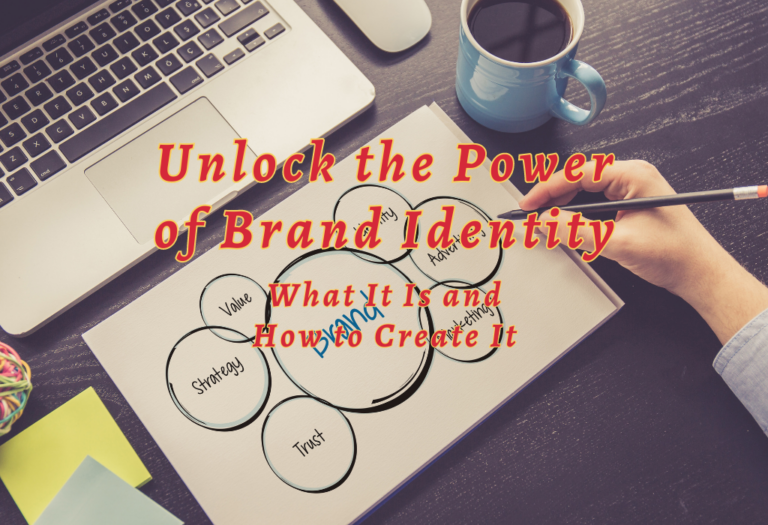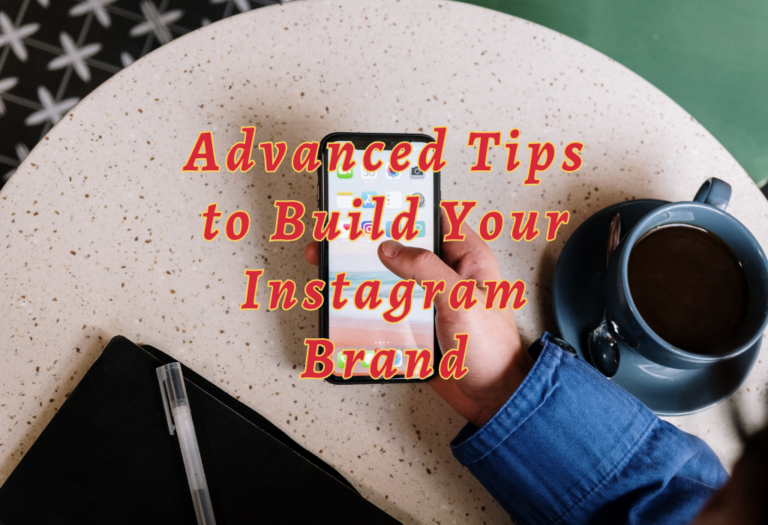Unlock the Power of Brand Assets: What You Need to Know
When building a successful brand, one of the most important elements is having strong brand assets. From logos and website designs to promotional materials and social media campaigns, all of these aspects combine to create an identity that reflects your business’s core values. Brand assets are more than just visuals; they have the power to build trust with customers while also establishing credibility in the marketplace.
In this blog post, we will explore brand assets, why they matter for large and small businesses, the different types of brand assets available today, and how you can use them effectively. We’ll also look at ways to protect your valuable asset investment so that no one else profits from them without permission or payment.

What Are Brand Assets?
Brand assets are the visual elements that represent a company’s identity and help to differentiate it from its competitors. These assets include logos, colors, typography, images, and other design elements that create a consistent look and feel for the brand.
Brand assets are an important part of any business’s marketing strategy as they can be used to build recognition for your brand among customers.
Well-Known Examples of Brand Assets
Here are some well-known examples of brand assets:
Microsoft has a unique color scheme consisting of four colors – Orioles Orange, Apple Green, Selective Yellow, and Vivid Cerulean – instantly recognizable as part of their logo. This helps people associate the colors with Microsoft products such as Windows.
Amazon boxes have become iconic in their own right due to the smile on the side of each box, along with special offers printed on tape used to seal it shut. Seeing this packaging makes people think immediately about Amazon products or services.
The apple in Apple’s logo has a small bite taken out of its upper right corner, making it stand out from other brands’ logos. It also comes in different colors depending on when you first encountered it; for example, older versions were rainbow-colored, while newer ones tend to be gray or black-white variations thereof.
McDonald’s tagline, “I’m lovin’ it.” is one that many people know without even realizing where it came from; similarly, their jingle “Ba da ba ba ba… I’m lovin’ it.” is often heard playing through speakers at fast food restaurants all over the world. Both these elements help solidify McDonald’s branding in consumers’ minds no matter where they go or what they hear.
Why Are Brand Assets Important?
Brand assets are essential for any business looking to create a strong, recognizable presence in the market. They help establish an emotional connection between customers and the brand, which is key to customer loyalty. Brand assets also provide a sense of trustworthiness and reliability that can be hard to come by in today’s competitive landscape.
One of the most important aspects of brand assets is their ability to make a lasting impression on potential customers. Through visuals such as logos, colors, fonts, and images, brands can communicate their values and mission quickly and effectively. This helps build recognition among consumers who may not have heard about them or have time to research them thoroughly. Additionally, these visual elements allow businesses to stand out from competitors while staying true to their core identity.
Another benefit of having well-crafted brand assets is that they can help increase conversions when used strategically across digital channels like websites or social media platforms. For example, use consistent branding throughout your website design. It will create familiarity with visitors who already know your company’s name or logo from other sources (e.g., print ads). This familiarity encourages users to take action more often than if presented with unfamiliar content.
Finally, having quality brand assets allows companies to control how they are represented online and offline. That ensures consistency across all mediums so that customers always recognize the same look regardless of where they encounter it (e-commerce store vs. print ad). By taking ownership of their own representation through branded materials like logos or slogans/taglines, businesses can protect themselves against misrepresentation caused by third parties using unauthorized versions without permission or approval from the original source material owner/creator(s).
What’s the Difference Between Brand Assets and Digital
Brand and digital assets are two distinct concepts that often need clarification. Following is the difference between brand assets and digital assets:
What Are Brand Assets?
Brand assets are any physical or intangible assets a company owns that are used for branding purposes. This includes logos (which should always be unique), slogans, taglines (which help define your brand’s identity), trademarks (which protect your intellectual property from being copied), copyrights (for original works of authorship), patents (for inventions), designs and more. All these elements combined create an overall visual identity for your brand, which helps customers recognize it quickly in a crowded marketplace.
What Are Digital Assets?
Digital assets are computerized files with usage rights attached, such as photos taken by professional photographers or designers who own the copyright for those images. These digital files can also include videos produced by companies for promotional campaigns and audio recordings made specifically for marketing purposes – all of which have associated usage rights, so they cannot be reused without permission from their owners first.
How Do They Differ?
The main difference between brand and digital assets lies in how they’re used – while both serve important roles in creating an effective branding strategy, one focuses on creating tangible visuals. At the same time, the other provides content with legal protection against unauthorized use or duplication. Branding involves building recognition through visuals like logos. In contrast, digital content requires ownership over its distribution channels since it’s about more than just having great content but also ensuring you control where it appears online, so no one else can take credit for it.
What Types of Brand Assets Exist?
The different types of brand assets include logos, color palettes, typography, imagery, patterns, icons, and illustrations. When used consistently across all marketing materials, they create a cohesive look and feel for the brand.
Logos are one of the most important brand assets, providing an instantly recognizable symbol to represent your business or product. Logos should be simple yet memorable so customers can easily recognize them in any context – from web banners to print ads to TV commercials.
Color palettes also play an important role in creating a consistent look and feel for your brand. Colors evoke certain emotions and associations, which can help shape how customers perceive your company or product. Choosing colors that match your branding message is essential when designing logos, websites, or other marketing materials.
Typography is another key element of branding, as it helps convey messages quickly and effectively without using words alone. Different fonts have different personalities, which you can use to communicate with customers emotionally while reinforcing the core values of your business or product simultaneously.
Imagery is often used in conjunction with typography to further emphasize messages while providing visual interest simultaneously. Photos, videos, and graphics can be used to showcase products or services while conveying emotion through visuals rather than words alone – making them powerful tools for connecting with customers on a deeper level than traditional advertising methods allow for
Patterns are great ways to add texture and depth to designs without overwhelming viewers with too much detail at once. That makes them ideal choices for backgrounds on websites or printed materials such as brochures or flyers where space may be limited, but impact needs to remain high.
Icons are small graphical symbols that represent specific actions such as “add,” “delete,” “save,” etc., allowing users to quickly understand what each button does without having to read lengthy instructions first.
Illustrations are more detailed versions of icons that usually take up more space but offer greater flexibility when expressing ideas visually rather than relying solely on text-based descriptions.
Finally, sound effects/music can also be considered part of a brand’s asset library since they provide additional layers of meaning beyond what visuals alone could ever do. It helps to create immersive experiences even if only heard briefly during advertisements or promotional videos.
Brand assets should always reflect business owners, entrepreneurs, and startups’ values and goals. So that their target audience will know exactly who they are dealing with right away – no matter where these elements appear online, offline, on television or radio, etc.
How Do You Create Brand Assets?
Creating brand assets is an important part of any business’s marketing strategy. It involves creating a unified look and feel for the company to help it stand out from competitors and attract customers. When creating brand assets, it is important to consider following factors:
Colors play an important role when creating brand assets since they can evoke certain emotions in viewers and influence their perception of the company’s message or product offerings. Choose colors that reflect your brand values while visually appealing to potential customers. Avoid using too many shades of one color, which can be overwhelming for viewers; instead, opt for two-three complementary hues that work well together without clashing. For example, use bolder colors or modern fonts in your branding materials if you target millennials.
Make sure your logo stands out from others in a competitive market by using unique shapes or typography styles. Additionally, think about how each element works together to create a cohesive look for the brand across different mediums, such as print materials or digital media platforms like social media sites or websites.
Fonts should be carefully chosen as they can affect readability depending on the typeface used. Sans serif fonts are more legible, while script-style fonts may add elegance but could be difficult to decipher at smaller sizes. Experiment with different font combinations until you find something that works best for your design aesthetic and complements your brand values. Contrasting font weights (bold/regular) can create a dynamic look between text elements, making them easier to read without compromising visual appeal.
Images are a key component when designing effective brand assets; they should represent both what your company does and its core values. When selecting photos, consider who you’re trying to reach out to – stock photos might work great if there isn’t enough budget available, but custom photography could elevate visuals further. Incorporating images into designs should be done with plenty of white space around them, so viewers don’t get overwhelmed by large amounts of content all at once. Consistent photo styling throughout various pieces helps maintain continuity between different parts of a campaign, making it easier for people to recognize and remember brands quickly over time.
Videos are becoming increasingly popular among businesses because they capture attention quickly and engage audiences better than static images alone. However, these require careful planning, and production quality needs must meet certain standards before releasing them publicly. Otherwise, it could negatively impact how people perceive companies’ messages and products offered, especially if the video quality could be better compared to competitors. Keep this in mind when deciding whether to include videos within branding efforts to ensure maximum impact without sacrificing visual appeal.
How Can You Protect Your Brand Assets?
Protecting your brand assets is essential to maintain control over how your company is represented in the marketplace. This can be done by registering trademarks or copyrights for any logos or other creative works associated with your company’s branding efforts. Registering a trademark gives you exclusive rights to use that logo, name, phrase, etc., and prevents others from using it without permission. Copyright registration protects original works of authorship, such as artwork, photographs, music, and videos.
It’s also important to monitor the online usage of your logo or other branded materials to protect against third-party misuse or infringement. You should regularly search social media sites and image-sharing websites like Google Images for unauthorized uses of your brand assets so that you can take action if necessary. Additionally, you may want to consider implementing a Digital Millennium Copyright Act (DMCA) policy on all digital platforms where users can upload content – this will allow you to quickly remove infringing material when it appears online.
You should also ensure that any contracts related to using your brand assets are clear and enforceable so that everyone involved understands their obligations regarding properly using the asset(s). Finally, it’s important not only to protect existing brands but also to create new ones. Creating unique logos and slogans will help ensure that no one else has access or control over them, which helps prevent confusion among customers about who owns what asset(s).
In addition, having an established set of guidelines around how each asset should be used internally within an organization ensures consistency across all departments while protecting against potential legal issues down the line due to incorrect usage by employees or contractors. These guidelines could include size restrictions on logos/images used in marketing materials and rules about color palettes used when creating graphics for web pages/social media posts etc.
Having these policies clearly defined makes it easier for everyone involved with managing a company’s brand assets to understand their responsibilities when using them correctly and consistently throughout all channels they appear offline and online.
Conclusion
They provide the foundation for creating an impactful and memorable brand that stands out from the competition. By understanding what brand assets are, why they’re important, and how to create them, use them, and protect them, you can ensure your brand remains distinct in today’s competitive market.
Brand assets offer businesses the opportunity to differentiate themselves through creative visuals that capture their unique essence and values – ultimately helping to establish trust with customers and build loyalty over time.






